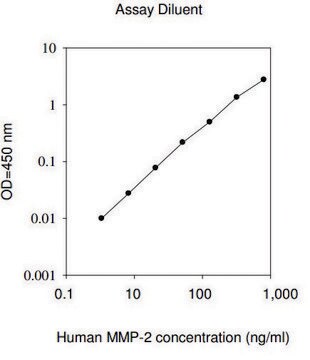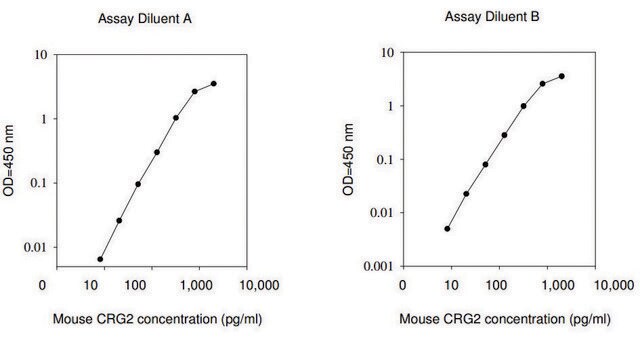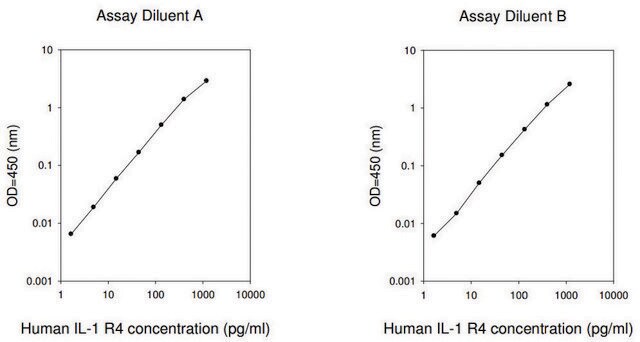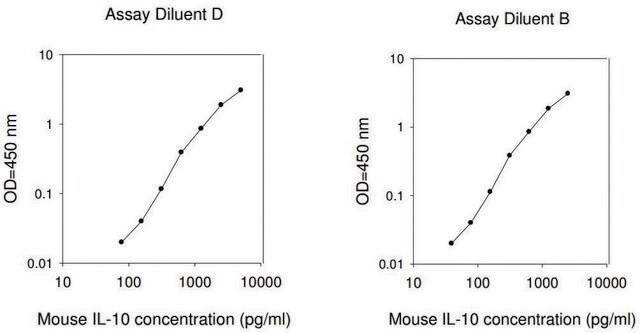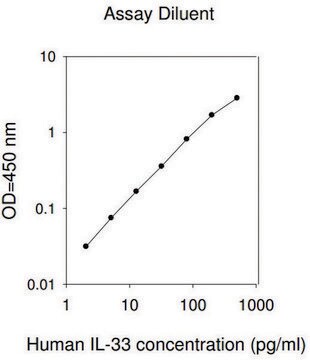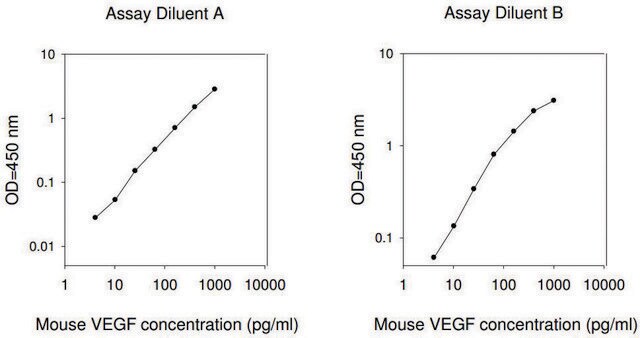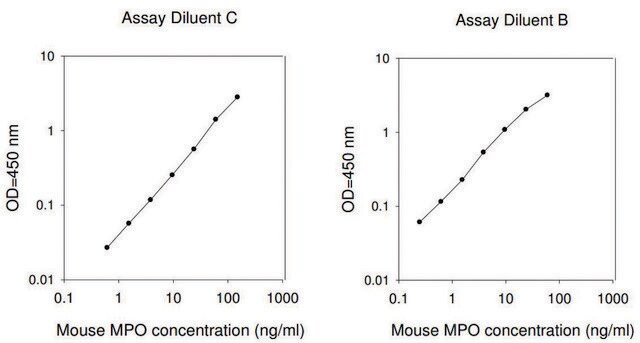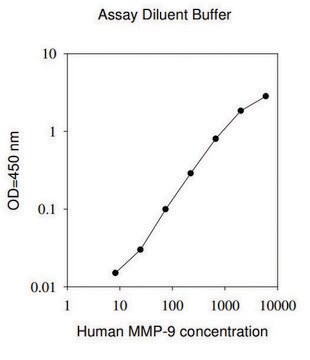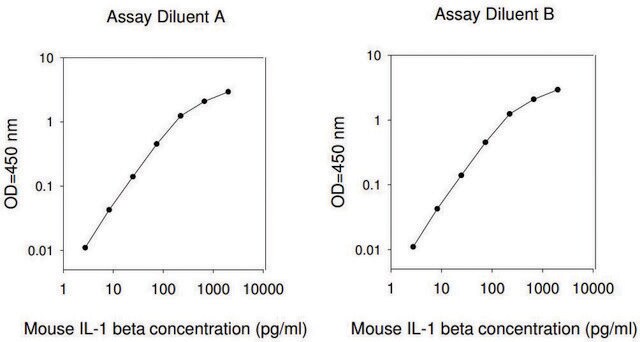RAB0366
Mouse MMP-2 ELISA Kit
for serum, plasma and cell culture supernatant
Sign Into View Organizational & Contract Pricing
All Photos(2)
About This Item
UNSPSC Code:
41116158
NACRES:
NA.32
Recommended Products
species reactivity
mouse
packaging
kit of 96 wells (12 strips x 8 wells)
technique(s)
ELISA: suitable
capture ELISA: suitable
input
sample type plasma
sample type serum
sample type cell culture supernatant(s)
assay range
inter-assay cv: <12%
intra-assay cv: <10%
sensitivity: 25 pg/mL
standard curve range: 27.43-20000 pg/mL
detection method
colorimetric
shipped in
wet ice
storage temp.
−20°C
Gene Information
mouse ... Mmp2(17390)
General description
Matrix Metallopeptidase 2 (MMP-2), also known as gelatinase A, belongs to the gelatinase subclass of the matrix metalloproteinase (MMP) family. It contains zinc in the active site. MMP-2 cleaves gelatin, type IV, V, VII, X, and XI collagens, fibronectin, vitronectin, elastin, laminin, proteoglycans, and a range of non-extracellular matrix (ECM) components. Both MMP-2 and MMP9 are important for matrix degradation and they are implicated in the maintenance of neovascularization. The Mouse MMP-2 enzyme-linked immunosorbent assay (ELISA) kit is an in vitro enzyme-linked immunosorbent assay for the quantitative measurement of mouse MMP-2 in serum, plasma, cell culture supernatants, and urine.
Immunogen
Recombinant Mouse MMP2
Application
For research use only. Not for use in diagnostic procedures.
Please refer to the attached General ELISA KIT Procedure (sandwich, competitive & Indirect ELISA)
Please refer to the attached General ELISA KIT Procedure (sandwich, competitive & Indirect ELISA)
Mouse MMP-2 ELISA Kit has been used in enzyme-linked immunosorbent assay to quantify matrix metalloproteinase -2 (MMP-2) secreted in supernatants by gold nanoparticles (AuNP)-loaded endothelial cells and superparamagnetic iron oxide nanoparticle (SPION) loaded endothelial cells.
Other Notes
A sample Certificate of Analysis is available for this product.
Please type the word sample in the text box provided for lot number.
Please type the word sample in the text box provided for lot number.
Signal Word
Warning
Hazard Statements
Precautionary Statements
Hazard Classifications
Met. Corr. 1
Storage Class Code
8B - Non-combustible corrosive hazardous materials
Flash Point(F)
Not applicable
Flash Point(C)
Not applicable
Choose from one of the most recent versions:
Already Own This Product?
Find documentation for the products that you have recently purchased in the Document Library.
Takayuki Shiomi et al.
Pathology international, 60(7), 477-496 (2010-07-03)
Cellular functions within tissues are strictly regulated by the tissue microenvironment which comprises extracellular matrix and extracellular matrix-deposited factors such as growth factors, cytokines and chemokines. These molecules are metabolized by matrix metalloproteinases (MMP), a disintegrin and metalloproteinases (ADAM) and
J C Rodriguez-Manzaneque et al.
Proceedings of the National Academy of Sciences of the United States of America, 98(22), 12485-12490 (2001-10-19)
Growth of tumors and metastasis are processes known to require neovascularization. To ascertain the participation of the endogenous angiogenic inhibitor thrombospondin-1 (TSP1) in tumor progression, we generated mammary tumor-prone mice that either lack, or specifically overexpress, TSP1 in the mammary
Shuaijun Lu et al.
Molecular medicine reports, 9(5), 1889-1894 (2014-03-08)
During pregnancy, disorders in uterine spiral artery remodeling (USAR) cause preeclampsia and other diseases. The aim of this study was to investigate the effect of 20-hydroxyeicosatetraenoic acid (20-HETE) on the biological behavior of human villous trophoblasts (HVTs) and human uterine
Jiaye Liu et al.
Bioengineering & translational medicine, 7(1), e10263-e10263 (2022-02-04)
Besides its well-known benefits on human health, calcitriol, the hormonally active form of vitamin D3, has been being evaluated in clinical trials as an anticancer agent. However, currently available results are contradictory and not fundamentally deciphered. To the best of
Claudia Umbreit et al.
Oncology reports, 32(2), 668-676 (2014-06-04)
Head and neck squamous cell carcinoma (HNSCC) is the sixth most common type of cancer worldwide. The growth and invasion of HNSCC are strongly influenced by the extracellular matrix (ECM), which is modified by matrix metalloproteinases (MMPs). The MMP family
Our team of scientists has experience in all areas of research including Life Science, Material Science, Chemical Synthesis, Chromatography, Analytical and many others.
Contact Technical Service